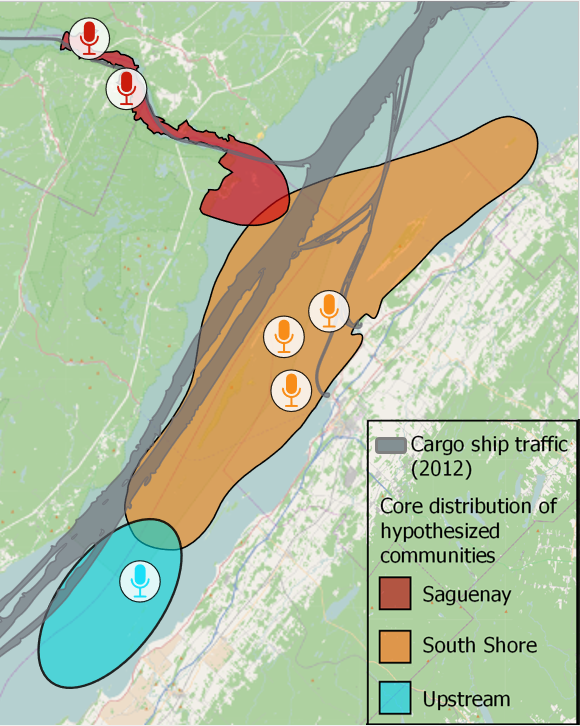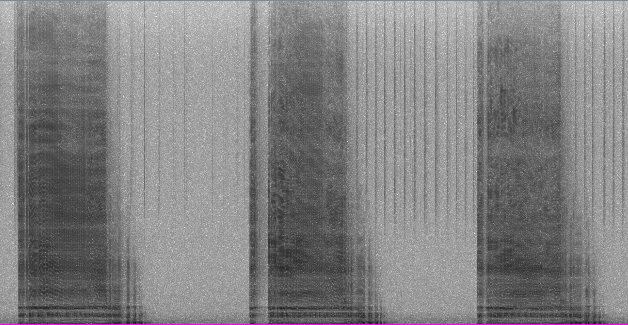My Research
Belugas are fantastically vocal beings, and bioacoustics may be our best bet at truly understanding them. For the past three years, I have been using beluga contact calls to help us understand the social structure of the endangered St. Lawrence beluga population.
The Groupe de Recherche et d’Éducation sur les Mammifères Marins (GREMM) has been developing a photo-identification catalogue of St. Lawrence belugas since 1985. These data suggest the presence of three beluga “communities”.
However, many belugas are difficult to identify from photographs, limiting the inferences that can be drawn from photo-identification. Beluga contact calls, however, are believed to function as individual or familial vocal signatures, much like our names. Belugas may be more distinctive acoustically than visually!
Along with my research partners at the University of Windsor, Raincoast Conservation Foundation, the GREMM, ROMM, Parks Canada, and the Wolahstoqiyik Wahsipekuk First Nation, I am recording beluga contact calls at 6 sites scattered across the hypothesized range of the three beluga communities, with the goal of developing a catalogue of all contact calls recorded at each site.

Fantastically Vocal Beings
By developing a catalogue of contact calls at each site, I hope to demonstrate that certain areas of the St. Lawrence Estuary are favoured by specific groups of belugas.
We believe that these patterns will likely be driven by females. Females with their young are particularly vulnerable during the summer calving season, when they must share space with pleasure crafts and whale watching tour boats. If communities of females exists, then certain communities are likely more impacted by disturbance than others.
By using acoustics to corroborate the presence of female communities, we hope to ensure the protection of all female St. Lawrence belugas and their young
Communities and Dialects?
Dialects have been identified among many odontocetes, including killer whales, sperm whales, and short-finned pilot whales, but have never been observed among belugas.
If there are indeed communities of St. Lawrence belugas, they may have unique contact call dialects. This means that the contact call of each community would be similar to each other, but dissimilar to the contact calls of other communities.
Such dialectal differences may be related to the anthropogenic pressures on each community. For example, a community subject to high levels of noise may have contact calls adapted to noisy environments. Quiet communities, on the other hand, might have more variable contact calls.

